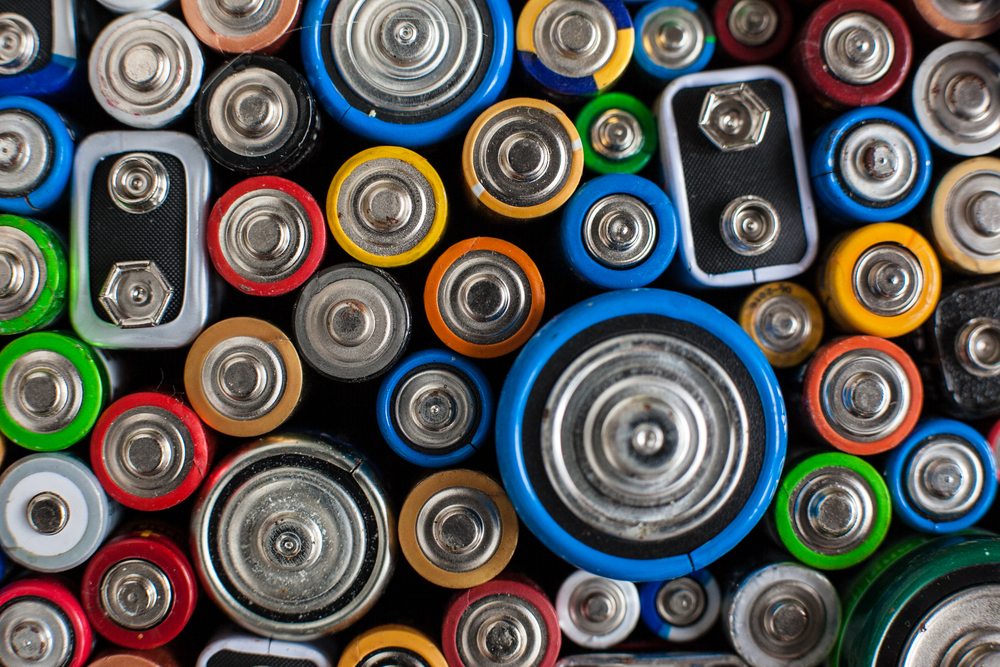
The leader of battery stewardship organization Call2Recycle says stakeholders should align themselves behind consistent policies to bolster battery recycling to avoid furthering the patchwork of local regulations. | Aksana Tsishyna/Shutterstock
People often see the world of new tech through rose-colored glasses, and with good reason. New technology can be fun, exciting and it opens up seemingly endless opportunities to explore the world and be more productive. This drives innovation, yet it can also distract us from fully appreciating some of the unintended consequences of tech, which can prevent us from seeing the full environmental picture and life cycle of the devices we use.
The latest example of this mindset? Battery recycling. Batteries are powering everything from our cell phones and laptops to electric vehicles and electric bicycles. As product innovation and the battery market continues to grow, so will the need to be more thoughtful about what we do with these products and their batteries when we’re done with them. One indicator of a disconnect lies in the massive difference in size when comparing the battery production and battery recycling markets. That delta, potentially tens of billions of dollars, signals a lost opportunity to meet the growing demand for the materials that power new technology by closing the loop and prioritizing the use of recycled materials so that less raw material needs to be mined from the Earth.

Leo Raudys
As we turn the page on National Battery Day 2022, which we observed on Feb. 18 , it’s an optimal time to confront that challenge more seriously. Doing so would mean establishing and enhancing more infrastructure to address the battery ecosystem’s two most pressing priorities: safety and circularity. While solutions already exist – such as the U.S. nonprofit Call2Recycle – it will require a wide network of partners working together to scale up sustainable solutions like battery recycling and ensure that these innovative devices truly are the environmental game-changers we have been waiting for.
The market mismatch in 2021
In 2021, Call2Recycle collected more than 8.1 million pounds of batteries in the United States. While this represents a slight decline from 2020, there was a 12.3% increase in lithium-ion batteries collected for recycling. These numbers highlight a larger trend: The battery recycling market that year was worth just $3.6 billion, while the lithium-ion production market reached about $50 billion, a stark reminder that we need to continue improving infrastructure to close the gap and properly prepare for the millions of batteries that will swamp the market in the next decade.
We know there is more work to do. For some – like consumers – the real-life impacts of this market gap may not be particularly clear. But for those who handle materials like used batteries, it couldn’t be more obvious. A 2021 EPA report identified an alarming uptick in battery-caused fires in the waste stream, likely the result of improperly disposed lithium-ion batteries. This included 245 fires both in transit and at waste facilities between 2013 and 2020. They ranged from small fires that a single staff member could resolve to incidents that resulted in injuries to firefighters and waste workers. In those cases, fires resulted in the destruction of entire facilities, harm to local communities and chaos in the supply chain. Because batteries hold the key to modern life and a healthy climate, it’s critically important that safety is addressed throughout their entire journey.
Local governments around the country are feeling the impacts of these gaps in the battery ecosystem. In response, many have designed well-intentioned laws to address the issue – creating a patchwork of regulations across the country aimed at making consumer recycling easier while also encouraging manufacturers to provide better options. But those laws are limited by jurisdictional borders and are often infused with complexities. The solution will ultimately lie in greater alignment with all stakeholders along the supply chain.
Toward an integrated solution
This is the kind of multi-sector alignment Call2Recycle has fostered for nearly three decades. Today, it is the catalyst of several breakthrough battery recycling initiatives – from Vermont’s statewide primary battery stewardship program that broke records in overall collections last year, to the industry-wide e-bike battery recycling program in collaboration with national bicycling advocacy organization and the bicycle industry’s trade association, PeopleForBikes. With every sector of the economy increasingly powered by batteries, we are optimistic that a closed-loop battery ecosystem is possible, and necessary. Call2Recycle’s existing programs serve as a model for how companies and governments can seize the economic and environmental opportunities that come with sustainably managing their life cycle.
As battery innovation and usage soars, we all have a role to play in building a more robust system – a consistent, unified and comprehensive national solution – to sustain massive battery production in the coming years. And that starts with revolutionizing the way we collect, process and reuse the materials we already have.
Leo Raudys is president and CEO of North American battery stewardship organization Call2Recycle.
The views and opinions expressed are those of the author and do not imply endorsement by Resource Recycling, Inc. If you have a subject you wish to cover in an op-ed, please send a short proposal to [email protected] for consideration.


